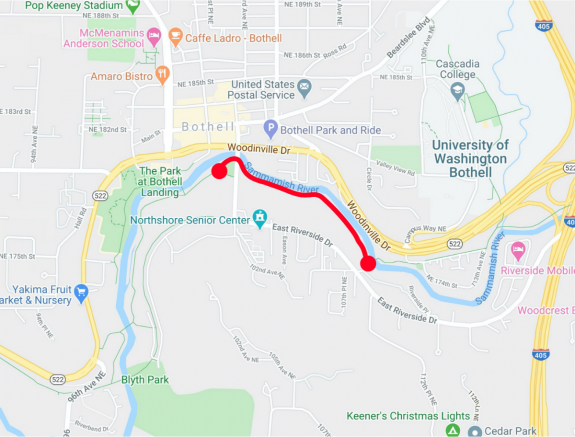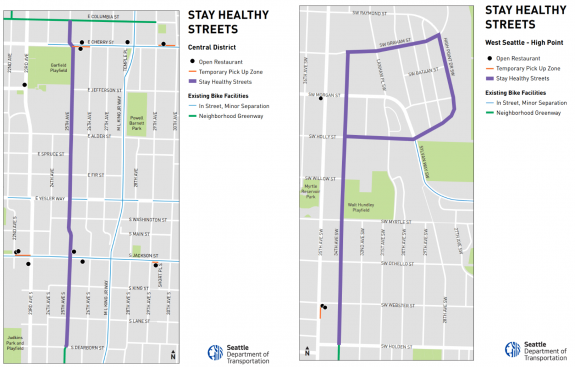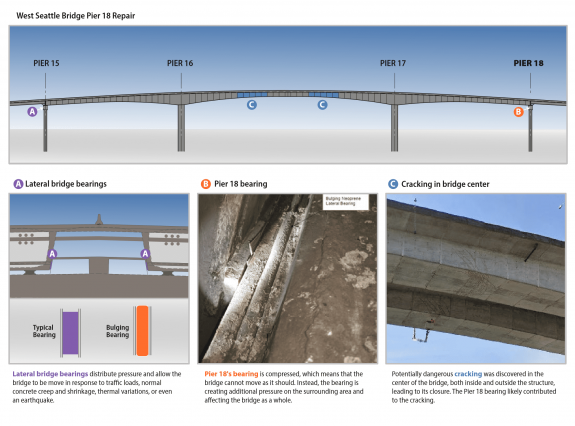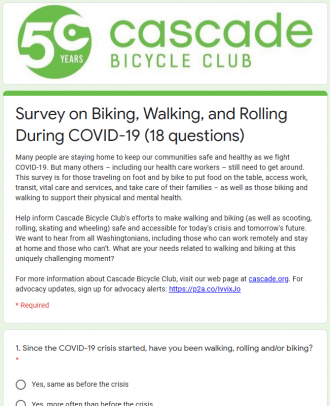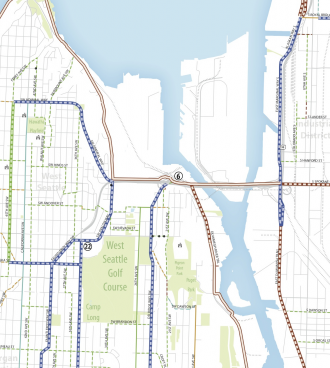
Seattle needs to take bold, unprecedented action to help many more people get around by bike during the longterm West Seattle High Bridge closure. This isn’t just about improving cycling conditions, it’s one of the only ways the city can keep the whole transportation system moving.
Every idea needs to be on the table, including efforts we have never tried before. This is an unprecedented challenge in recent Seattle history.
The West Seattle High Bridge is closed until at least 2022, and it may not ever open again in its current form. At this point, very little about the bridge is certain other than that it’s going to be closed for a long time. The lower bridge is still open, including the biking and walking path. Personal motor vehicles are not allowed, reserving this connection for transit, freight and emergency vehicles.
Of course the closure is already causing huge transportation problems for the neighborhood as everyone driving a personal vehicle who would have taken the bridge needs to reroute all the way to the 1st Ave S or South Park Bridges. But the real headache will come when the economy reopens and the 100,000 vehicles per day that typically cross the bridge have to find another route. There simply is not that kind of car capacity without the bridge.
This means biking will likely the most reliable and often fastest way to get across the Duwamish River. But as we explored in depth with the help of Anthony Palmieri of the community group West Seattle Bike Connections, the primary bike routes through and to West Seattle are often missing pieces or have other complications that make them either confusing or uncomfortable, especially for new riders. WSBC does great work to help their neighbors find routes that will work for them to help them get riding. But there’s a lot the city can do to remove obstacles that no amount of advice can get around. And many or all these projects can be completed at low cost, especially compared to the scale of this problem.
The city should be taking major steps to fully connect and protect bike routes to and through West Seattle. Just looking at the unfinished connections in the Bicycle Master Plan is a great place to start generating project ideas. But I thought I would highlight a few in particular: (more…)

